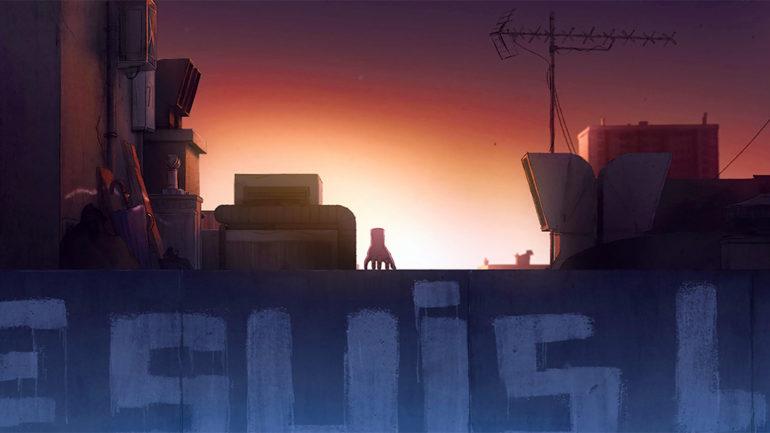Jeremy Clapin on Animating a Traveling Severed Hand in ‘I Lost My Body’
By Ben Croll
LOS ANGELES (Variety.com) – When all is said and done, the fact that a mute, missing appendage has become one of the year’s standout characters might not be the single most surprising development of 2019, but it sure comes close. Give a round of (one-handed) applause to “I Lost My Body” director Jérémy Clapin, who spent nearly eight years working on his feature debut, which functions as both a coming-of-age drama about a Moroccan immigrant named Naoufel who moves to France and falls in love, and as a tense urban thriller that follows Naoufel’s newly severed hand as it trawls the rooftops and gutters of Paris, searching for everything it lost.
Clapin: “The idea is not to tell the story of a man who loses a hand, but of a hand that loses a body. And so we follow a very classic film template — the story of two characters made for one another but separated by destiny. They begin together, get separated by fate and have to find one another anew.
“[Giving life to the hand] was challenging, no doubt, but I like that kind of challenge! It forced us to create a new vocabulary, a mise-en-scene that would allow the hand to express emotion without the benefit of a face.
“Once I started animation tests, I could quickly figure what worked and what didn’t. The camera always had to stay close to the hand and close to the ground. We had to forbid certain angles, either because they were too grotesque or too hard to understand.
“We also tried to avoid certain positions. A tightly clenched fist, for example, wouldn’t really tell us much, nor would it be very interesting; we needed positions and postures that humanized the hand. At the same time, we knew the fingers could also function as a head, tail or pair of legs when the need arose.
“The hand and fingers had to be something like a Swiss Army knife, but all of that had to come naturally — ideally, the viewer wouldn’t be conscious that the function had changed.
“When I started animating, I realized that the hand became more interesting whenever we threw it into an extreme situation. There was no point in framing from afar or being too aloof. Instead, we borrowed genre codes and approaches to keep things dynamic and intense.
“My shorts were more static and psychological in nature, and I had never done an action sequence before … [so the style] was a very natural outgrowth of the very concept of the film, because the hand is entirely defined by its own actions and movements.
“I know that ‘The Addams Family’ might be first thing people will think of when they hear about the project, but I hope they have a different image after actually seeing the film. For one thing, the hand is more of a gag in ‘The Addams Family,’ without much character depth, and I wanted my hand to move in a very different way. There, the hand mostly moves laterally across the floor, whereas I wanted mine to explore the world with absolute freedom — to really benefit from the absence of a body attached to it.
“In animation, you often have to play with the sound in order to make your fantastical images come to life. You know what kind of impact sound can have, because it accounts for 50% of your work.
“The hand experiences the world in a very tactile way, [and] I tried to figure out how I could connect the sensorial experience of the hand, which is still a mute and inexpressive character, to Naoufel’s past, and his story. I figured that a really detailed soundscape could bridge that gap, linking the two and putting them in contact.”

